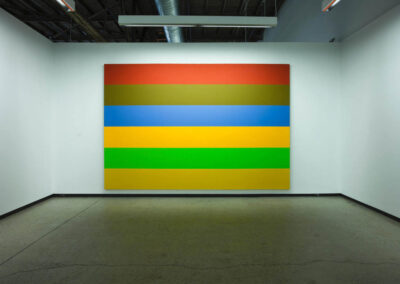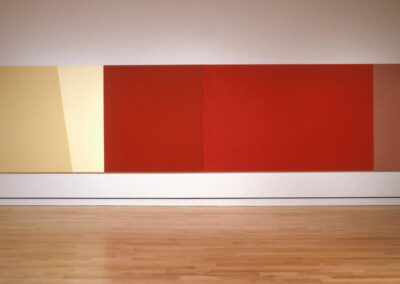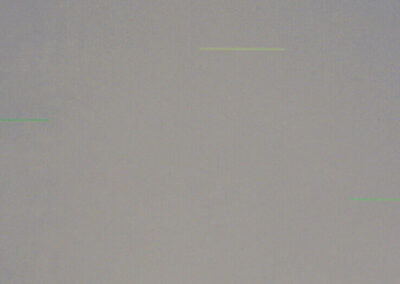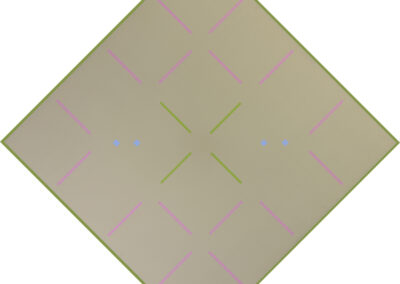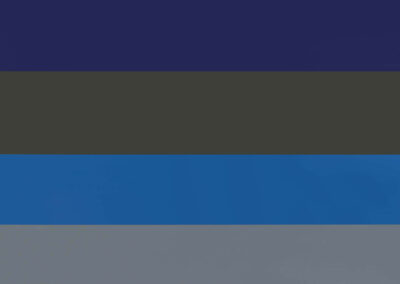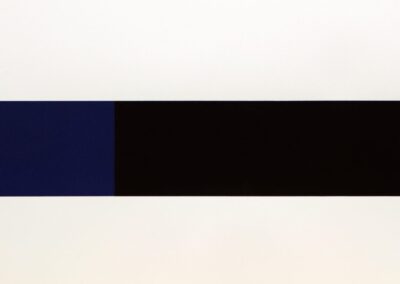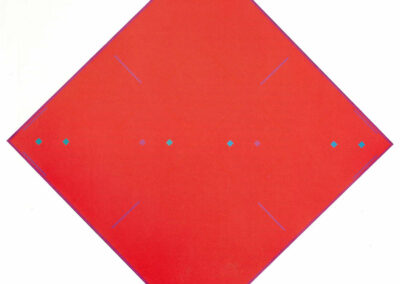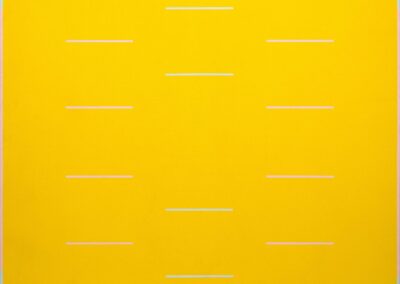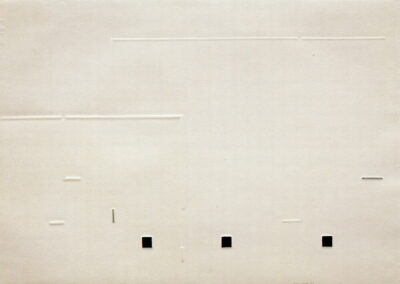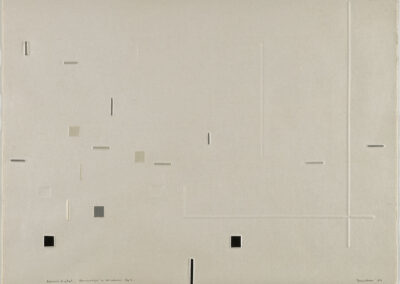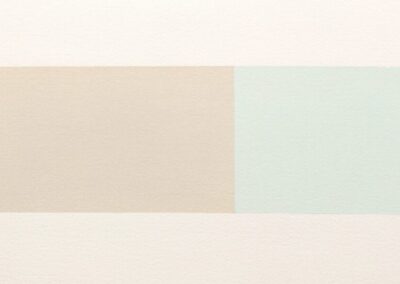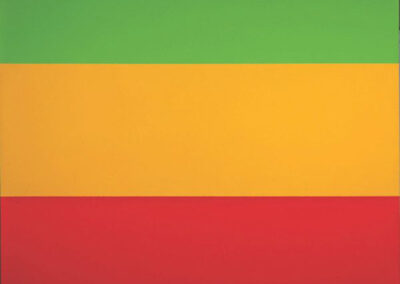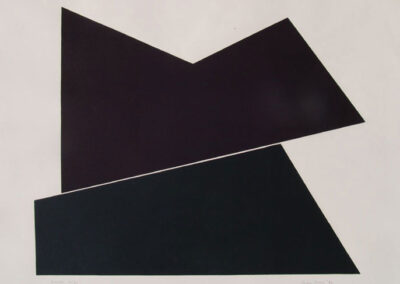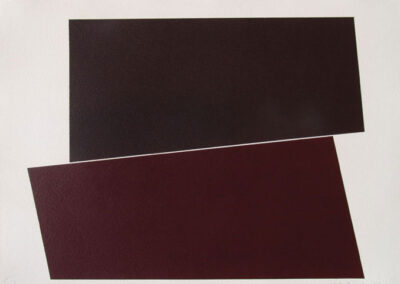Our next Artist You Need To Know is Yves Gaucher (1934 – 2000).
Gaucher worked in both paint and printmaking (the latter being the space where he first established himself as an artist), and his work is marked by an ongoing exploration of abstraction. In the 1950s and 60s, Gaucher was among the forefront of Québecois – and Canadian – artists.
From the National Gallery of Canada: “Yves Gaucher’s abstract artworks make reference to human experience and feelings through an understanding of the aesthetic qualities of line, colour, texture, light and volume. Through viewer interaction with his art, he intended to communicate a sense of presence and promote self-awareness.”
The monumentality of his works, the vibrant and overwhelming colours – or the subtlety of his colour fields – and the manner in which Gaucher’s paintings can dominate and define a space speak to the physicality of his work which offers an intriguing contrast to the hard edged ‘purity’ and intellectualism of his forays into Modernism. Gaucher’s paintings exist between Plasticien painting (an aesthetic also explored by a past AYNTK Rita Letendre) and Post-Painterly Abstraction.
“Music and poetry had more influence on me than painting. Especially the music of [Austrian composer Anton] Webern. I wanted to do in engraving what he had done in music: elaborate a visual rhythm with counter-rhythms created by the striking effect of colour”
He was raised in a very musical home and this was formative in his approach to art throughout his entire life. Like many of his contemporaries in the Québec art scene that coincided with the Quiet Revolution in that province, Gaucher was heavily influenced and cognisant of art movements and artists in New York City and Europe, eschewing the more insular Canadian art world he first experienced.
Gaucher attended the école des Beaux-Arts in 1954-56 but was ejected from the school for only attending the classes he was interested in and ignoring all others (he was officially expelled for ‘insubordination’). He continued to study art on his own, and would return to the school to study printmaking under Albert Dumouchel. He – unsurprisingly, considering his earlier unwillingness to submit to conventions that didn’t serve his artistic vision – created a new printmaking technique that involved heavy embossing.
In 1957 Galerie l’échange in Montréal presented his first solo exhibition and in 1960 he became the founding president of Associations des Peintures-Gravures de Montreal. In 1962, Gaucher was awarded a grant from the Canada Council to study in Europe.
This trip would change the direction of his work completely, as when in Paris, Gaucher discovered the music of Anton Webern: “It led him to break free of rational geometric relationships by using irregular patterning, and colour contrasts. As he played with positive and negative relief, broken line, and carefully chosen colours on a background of varied papers, Gaucher’s visual images echoed the rigorous atonal notes of the musical compositions that stimulated him.
In 1964, he distanced himself from print-making and began to re-examine the art of the New York Modernists including Barnett Newman and Mark Rothko. He was drawn to their geometric shapes, flat colour planes and large canvases and began to create works that had structural affinities to the Modernist aesthetic. However, instead of an art of transcendence, Gaucher sought to create an embodied epiphany.
The artist’s interest then turned to mathematical relationships. He used elements of symmetry and pattern to explore the surface of the canvas. Later, he explored unusual spatial relationships, which evolved into monochrome works.” (from here)
Journalist and art critic Lisa Balfour Bowen describes the works of this period in the following way : “. . . he now works in a spacious, whitewashed second floor studio on St. Paul Street where he operates a bit like a marksman in a shooting gallery. It’s not that he sprays his paintings. It’s just that he observes their ‘behaviour’ from a considerable distance while behind him burns a battery of six powerful floodlights ‘warming up’ what he calls ‘the cold light of day’ . . . Gaucher begins painting by covering the entire surface of his canvas with a basic background colour – be it black, blue, red, . . . structure becomes ‘inevitable’ because the background colour alone determines what sort of geometrical configurations will ultimately be projected upon it . . . Usually he plots broken lines in such a way that the eye or the imagination are required to complete the composition. And the paintings which result are not meant to cause an immediate reaction. Instead, they should manifest ‘a slow intense life of their own’.” (from here)
As his aesthetic grew and progressed into the 1970s, Gaucher began to produce the paintings for which he is best known: these broad striped works, massive in size, employed colours that both complimented and challenged each other. Later, diagonals and ‘disrupted space’ would appear in his works, chaotic elements and ‘disrupted rhythms.’
Gaucher would later teach at Concordia University in Montréal. He was awarded the Order of Canada in 1980 and a year later was named as a Member of the same. Although perhaps best known for his paintings, Gaucher was an essential force behind Québec’s printmaking movement of the 1950s and 60s.
His work can be found in the collections of The Art Gallery of Ontario, The Art Gallery of Alberta, Musée d’art contemporain de Montréal, Musée national des beaux-arts du Québec, the Vancouver Art Gallery, the National Gallery of Canada and the Museum of Modern Art in New York City.
Yves Gaucher passed away in Montréal in September of 2000. Roald Nasgaard (considered by some to be the pre eminent art historian regarding Canadian abstraction) offers the following summation of Gaucher’s work: “Gaucher’s well-practised intuition determines the exquisitely tuned details of line lengths, tonalities, and relative placements. Despite their limited means, the emotional range of the paintings is astonishing.”
Much more about his life and work can be learned through a fine publication produced by the Art Canada Institute | Institut de l’Art Canadien which can be enjoyed here.


